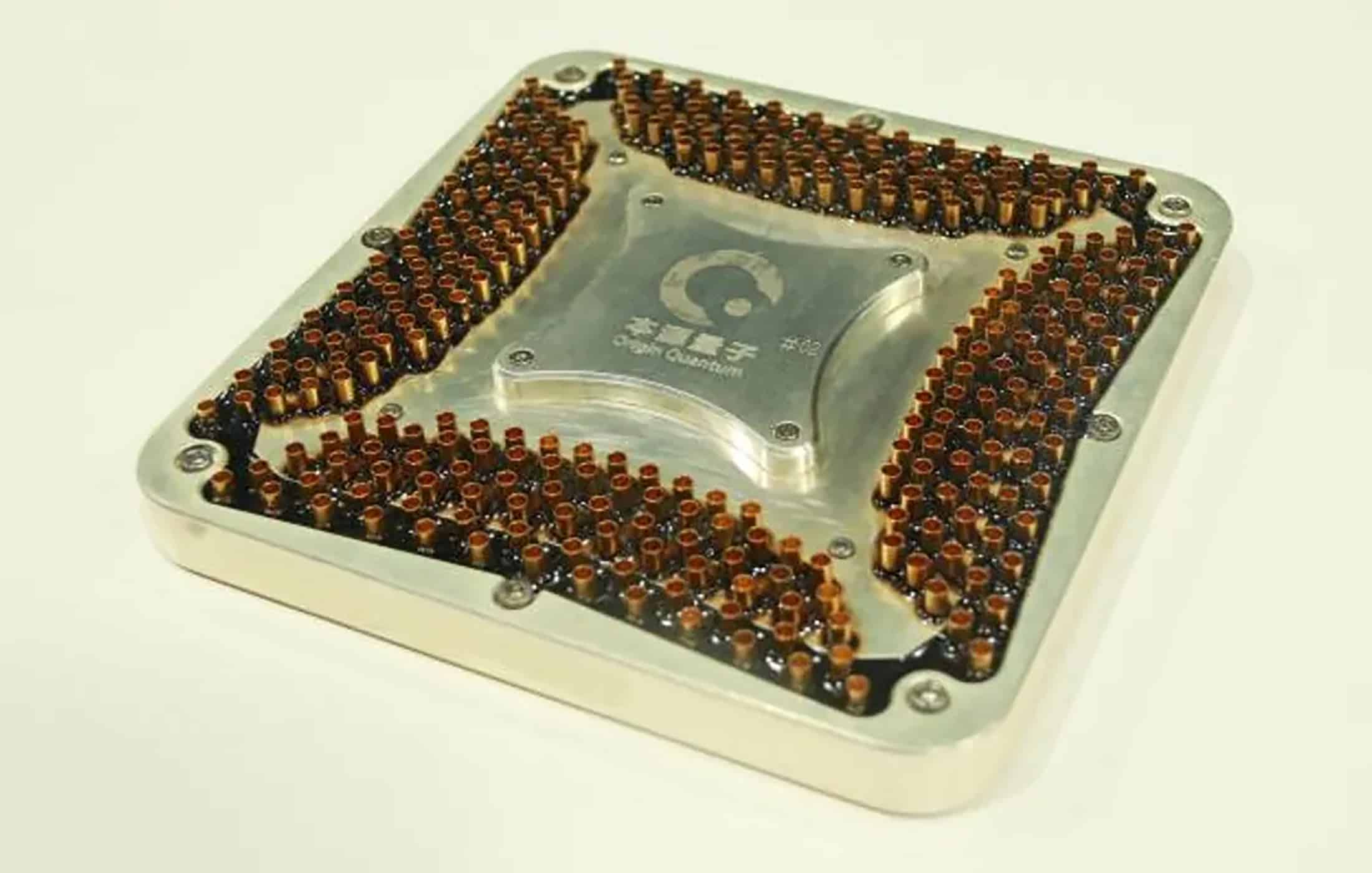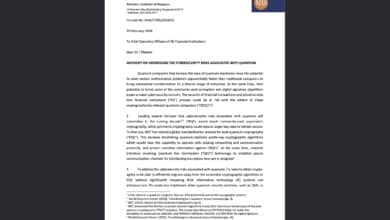Origin Quantum’s Wukong: China’s 72-Qubit Processor

Table of Contents
Hefei, China, (Jan 2024) — In a major milestone for China’s quantum tech ambitions, Hefei-based startup Origin Quantum has unveiled “Wukong,” a 72-qubit superconducting quantum processor. Launched on January 6, 2024, this third-generation quantum computer is China’s first home-grown superconducting quantum computer and the most advanced of its kind in the country. The system – named after the Monkey King Sun Wukong (famed for “72 transformations” in Chinese legend) – symbolizes its powerful capabilities and marks China’s official entry into the era of accessible quantum computing.
A 72-Qubit Breakthrough and Global Debut
Wukong is powered by a 72-qubit superconducting chip dubbed the “Wukong chip,” fabricated on China’s first dedicated quantum chip production line. Uniquely, the chip contains 198 physical qubits in total: 72 functional qubits plus 126 additional coupler qubits that enhance connectivity. This design echoes approaches by leading labs (Google and IBM also employ coupler circuits) and is intended to maintain control over interactions as the qubit count rises. Key performance metrics like qubit coherence times and readout fidelity are at internationally competitive levels, according to the team. The Wukong system is housed in a dilution refrigerator operating near absolute zero, with custom high-density cryogenic interconnects to support its hundreds of qubits.
Beyond the impressive qubit count, Wukong introduced new engineering breakthroughs. It is integrated with Origin’s third-generation quantum control system (“Tianji”), enabling the first-ever automated batch testing of quantum chips in China. This automation accelerated chip calibration and validation, boosting the machine’s overall runtime efficiency by dozens of times. In practice, that means faster turn-around in tuning qubits and more stable performance – critical steps toward scaling up quantum processors. Kong Weicheng of the Anhui Quantum Computing Engineering Research Center noted that Wukong’s advanced control stack significantly increases the computer’s operational efficiency, bringing quantum computing closer to practical usefulness.
What Wukong Has Achieved So Far
Since coming online, Origin Wukong has been opened up for cloud access, signaling a new era of quantum computing accessibility in China. In the first three months after launch, it attracted over 8 million remote visits from users in 120+ countries, completing roughly 180,000 quantum computing tasks ranging from circuit experiments to optimization problems. This public platform allowed researchers and students worldwide to run algorithms on a Chinese quantum processor – a role until now dominated by US-based services. Notably, users from the United States have been among the most active on Wukong’s cloud, a testament to global interest in its capabilities. By early 2025, Origin reported that total visits surpassed 20 million, with over 339,000 jobs executed on the system across industries like finance, biomedicine, and materials sciencen. While these tasks are mostly exploratory or educational, they demonstrate Wukong’s stability and usefulness as a programmable quantum computing testbed.
The Wukong chip’s 72-qubit size also gives China a valuable platform to explore intermediate-scale quantum algorithms. It’s not yet in the league of demonstrating true quantum advantage on complex problems, but it provides a stepping stone for Chinese researchers to experiment with algorithms in quantum chemistry, machine learning, and optimization. Indeed, Origin Quantum has already collaborated on projects such as quantum fluid dynamics simulations and quantum machine learning, leveraging Wukong’s computing power in novel ways. According to the company, quantum applications in bioscience, materials engineering, and AI have been tested on Wukong, some even moving from experimental demos toward real-world pilot projects. This progress underscores that Wukong is not just a lab device but a working machine driving research.
Stacking Up Against IBM, Google, and Chinese Peers
Wukong emerges at a time of rapid advances in superconducting quantum computers worldwide. In terms of qubit count, Origin Quantum’s 72 qubits are a record for a Chinese company, but still modest next to the largest U.S. chips. IBM, for instance, has been on an aggressive scaling roadmap: it debuted the 127-qubit Eagle processor in 2021, followed by the 433-qubit Osprey in 2022. By late 2023, IBM had even unveiled Condor, a 1,121-qubit processor, shattering the thousand-qubit barrier. These IBM milestones far exceed Wukong’s raw qubit count. However, Wukong’s achievement lies in delivering a fully functional, domestically built quantum computer at a time when most such high-qubit devices are confined to Western labs. IBM and Google remain ahead in scaling and error rates, but Wukong narrows the gap by establishing a Chinese foothold in the superconducting arena.
Google’s path has focused on demonstrating quantum computational advantage rather than just qubit counts. Google’s 53-qubit Sycamore processor famously completed a random circuit sampling task in about 200 seconds – a task they estimated would take the fastest supercomputer 10,000 years at that time. That 2019 feat, published in Nature, was hailed as the first experimental proof of “quantum supremacy”. Wukong’s 72 qubits exceed Sycamore’s in number, but to date Origin Quantum has not reported a similar quantum advantage experiment on Wukong. Achieving quantum supremacy depends not just on qubits but on low error rates and algorithm design. In fact, after Google’s claim, improved classical algorithms dramatically reduced that 10,000-year gap – to mere hours or seconds on powerful supercomputers. The bar for quantum advantage has risen, and China’s academic researchers have been active in this race.
In 2021, a USTC team led by Pan Jianwei did demonstrate a quantum advantage with a superconducting device named Zuchongzhi 2.1. That prototype had 66 qubits and successfully performed 56-qubit random circuit sampling in seconds – a task infeasible for classical simulation at the time. This made China the first country to reach quantum supremacy in two different platforms (first with photonic Jiuzhang in 2020, then with superconducting qubits in 2021).
Technical Advancements and Why They Matter
Wukong’s development showcases several technical advances with broader significance for quantum computing. First, the tunable coupler architecture (126 coupler qubits interlaced with 72 working qubits) is an approach to tackle a major challenge in scaling quantum processors: maintaining controllable interactions without introducing too much noise or crosstalk. Each coupler qubit in Wukong can mediate the interaction between neighboring computational qubits, allowing the coupling strength to be dynamically adjusted or turned off. This is similar in spirit to designs used by Google and Rigetti, and it contrasts with IBM’s recent 127-qubit Eagle and 433-qubit Osprey, which use fixed coupling in a heavy-hex lattice. The advantage of tunable couplers is improved gate fidelity for two-qubit operations, since qubits can be isolated when not involved in a gate. By employing 126 coupler elements, Wukong’s chip designers opted for greater circuit complexity in exchange for flexibility in control – a sign that Chinese engineers are pushing into the cutting-edge of superconducting qubit design. Such techniques will be crucial as devices move toward hundreds or thousands of qubits, where managing noise becomes as important as the raw qubit count.
Another critical advancement is Wukong’s quantum chip testing and packaging process. Origin Quantum built a domestic quantum chip production line and emphasizes that Wukong’s chip was produced and tested with a high degree of automation. Automated batch testing of quantum chips means that instead of tuning each qubit by hand (a time-consuming process), the team developed software and hardware to characterize and calibrate qubits rapidly and in parallel. This greatly speeds up the iteration cycle for improving chips and enables more consistent manufacturing – essentially bringing semiconductor industry practices into the superconducting quantum realm. The payoff is seen in Wukong’s performance: even with many qubits, the machine maintains stability over months of operation, with minimal human intervention to recalibrate. In fact, IBM has reported similar needs for automation as their processors grew (IBM’s 433-qubit device required new techniques to manage hundreds of control lines). Origin’s success here suggests that Chinese researchers have solved many practical engineering hurdles in quantum computer assembly and cryogenics. It also means China now has an indigenous supply chain for superconducting quantum hardware, reducing reliance on foreign components.
Finally, Wukong’s full-stack development (from chip to control system to software) is a noteworthy accomplishment in the broader context. Origin Quantum didn’t just stop at building a chip; they also created China’s first quantum computing operating system and control electronics in earlier projects. For Wukong, they implemented a third-gen control system with custom microwave electronics and control software tightly integrated with the hardware. This kind of vertical integration mirrors what companies like IBM and Google do and is essential for optimizing performance. It allowed, for example, the implementation of advanced error mitigation techniques on Wukong and the execution of complex pulse sequences needed for algorithms. All these pieces contribute to Wukong’s role as a fully functional quantum computer rather than an isolated chip experiment. As a result, Wukong can run a variety of quantum algorithms and even hybrid quantum-classical programs via the cloud, making it a valuable platform for researchers exploring quantum advantage in useful tasks.
Industry and Cybersecurity Implications
Although Wukong is a research-focused machine, its debut carries implications for industry and security. On the industry side, accessible quantum computers like Wukong can accelerate innovation by allowing companies and labs to experiment with quantum algorithms on real hardware. For instance, financial firms can test quantum optimization for portfolio management, and pharmaceutical researchers can try quantum chemistry simulations for drug discovery – areas that Origin Quantum has promoted on Wukong’s cloud. The fact that an overseas client has even purchased computing time on Wukong (the first export of Chinese quantum computing power) highlights an emerging market for quantum services. This commercialization, however nascent, is important for building a quantum industry ecosystem. It also pushes international competition: more available quantum machines mean more opportunities to find practical uses and skilled talent.
On the cybersecurity front, every advance in quantum computing inevitably raises the question of cryptography. Modern encryption algorithms (like RSA and ECC) could be broken by a sufficiently large and stable quantum computer running Shor’s algorithm, but experts estimate that thousands of error-corrected logical qubits would be required – a capability still likely a decade or more away. Wukong’s 72 physical qubits pose no immediate threat to encryption; they are noisy and far below the scale needed to factor large keys. Yet the steady progress represented by Wukong keeps the pressure on governments and companies to prepare. Recognizing this, the Wukong system itself was outfitted with post-quantum cryptography measures to secure its interactions: in April 2024, Origin Quantum integrated an “anti-quantum attack shield,” essentially employing quantum-resistant encryption for data transfer on the platform. It’s a symbolic but telling development – even as scientists build quantum computers, they are also deploying safeguards against future quantum attacks. The takeaway for the cybersecurity world is clear: the quantum era is drawing closer, and proactive adoption of quantum-safe encryption (PQC algorithms) is prudent.
A New Chapter in Quantum Computing’s Global Story
Origin Quantum’s Wukong processor represents a new chapter in the global quantum computing race, one where China is now a serious contender in superconducting qubits. Technically, Wukong showcases that Chinese engineers can design and operate a state-of-the-art 72-qubit quantum computer with performance approaching that of Western counterparts. Strategically, it validates China’s entire domestic quantum supply chain – from chip fabrication to deployment – at a time of geopolitical tech barriers. Wukong is, as one analyst put it, an “entry ticket” for China into the elite club of superconducting quantum computer manufacturers.
There are still substantial challenges ahead. Scaling from 72 qubits to several hundred or more will require further breakthroughs in engineering and error reduction, as IBM’s experience has shown. Moreover, fully unlocking useful quantum computing will demand implementing error correction; Wukong, like its contemporaries, is still a noisy, NISQ-era device. Chinese researchers are well aware of this — teams are already experimenting with small error-correcting codes on superconducting qubits. Origin Quantum’s achievement with Wukong provides the foundation and confidence to tackle these next steps.
Crucially, Wukong has also energized China’s quantum computing community. By offering the machine for cloud use, Origin Quantum has lowered the barrier for universities and startups in China (and globally) to get hands-on experience with a real quantum processor. This will help cultivate the talent and software development that quantum computing ultimately needs for success, much as IBM’s early cloud access did in the West. The rapid uptake of Wukong by thousands of users is a strong sign of this positive feedback loop. As more programmers experiment with Wukong’s 72 qubits, they will uncover new applications and improvements, potentially guiding the design of the next generation “Sun Wukong” with even more qubits.



